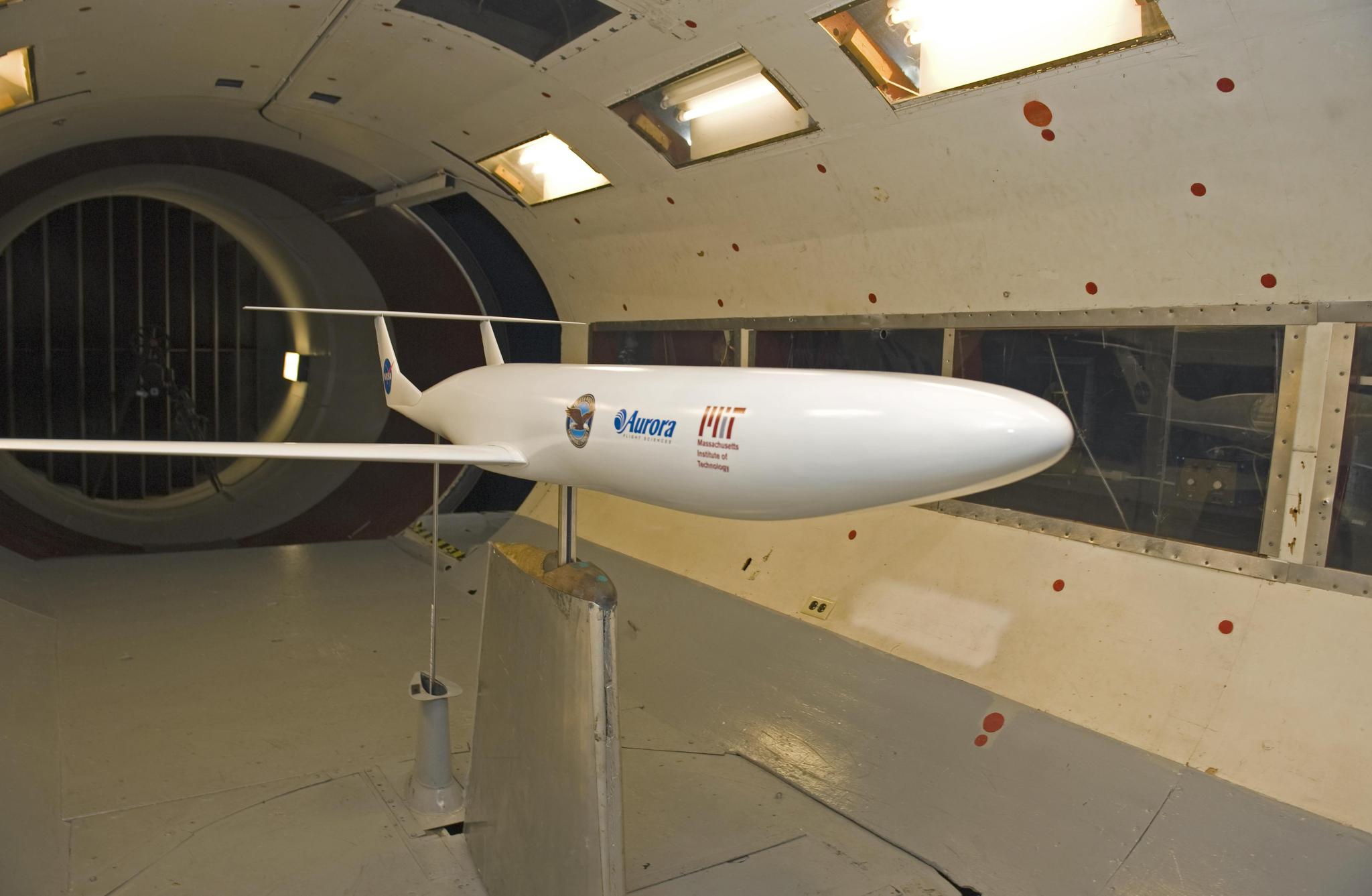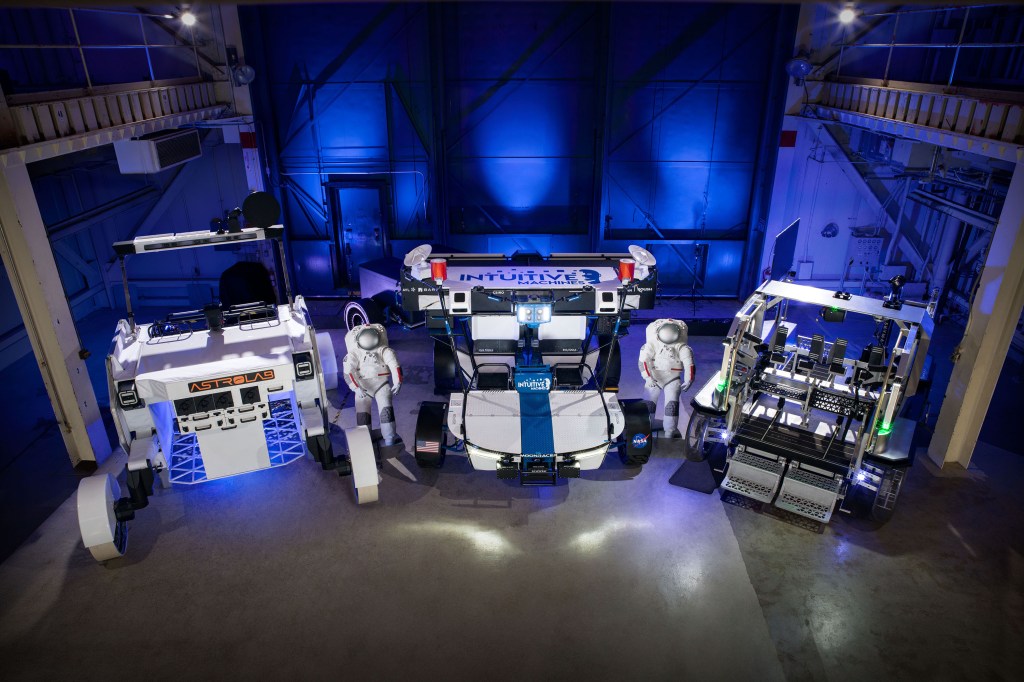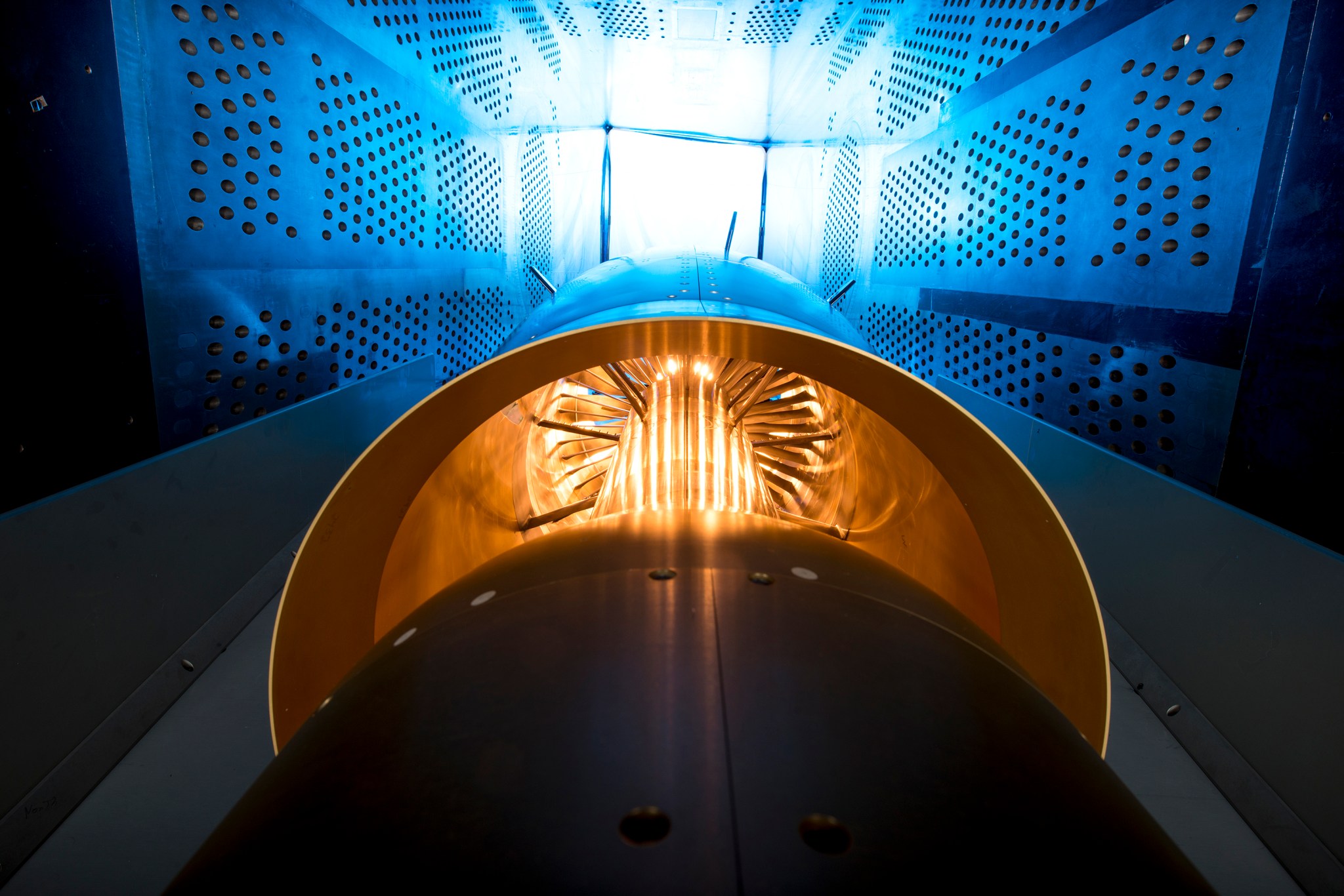It sounds like a cause of heart burn.
Instead, Boundary Layer Ingestion – or BLI – is a promising idea NASA researchers are studying to reduce fuel burn in jet engines, thus reducing emissions and the cost of operating the aircraft.
At its simplest: With BLI, an airplane’s engines are located near the rear of the aircraft so that air flowing over the aircraft body becomes part of the mix of air going into the engine and is then accelerated out the back.
“The idea isn’t completely new,” said Jim Heidmann, manager of the Advanced Air Transport Technology Project at NASA’s Glenn Research Center in Cleveland. “What we’re testing now are new technologies that can help us derive benefits from BLI.”
So, more specifically, what exactly is BLI and how does it lead to potential economic and environmental benefits?
A quick review: When an airplane is flying, it has four major forces acting on it – thrust, drag, weight and lift. Thrust makes an airplane go forward, while drag tries to slow it down. Lift offsets the weight to keep an airplane in the sky.
BLI deals specifically with the drag part of the equation by, ultimately, trying to reduce the total drag an airplane experiences in the sky.
It all starts with the fact that as an airplane flies through the air, a layer of slower moving air begins to build up along the skin of the fuselage and wings, which is fittingly called the boundary layer. This slower moving air causes additional drag.
At the front of the airplane the thickness of the boundary layer is zero, but as the air flows back over the surface of the airplane’s fuselage and wings, the layer grows thicker. By the time it gets to the rear of the airplane it can be a foot or more deep.
In a conventional tube and wing airplane, where the jet engines are hung beneath the wings, that’s the end of the boundary layer story. The slower, drag-inducing airflow just continues off the rear of the airplane to mix with the undisturbed air there.
Reducing Drag
The story changes when the airplane’s engines are put in the path of the boundary layer, for example, by placing them at the extreme rear of the airplane. Not mounted on either side of the tail on short pylons as seen on some airliners or business jets today, but directly atop or behind the main fuselage.
With the engines in this location, the slower, boundary layer air enters the engine – or is ingested, as in boundary layer ingestion – and is then accelerated with the rest of the air passing through the engine and exhausted out the back.
It doesn’t matter if the incoming boundary layer air winds up being compressed, mixed with fuel and burned to become part of the hot jet exhaust, or if the air flow bypasses around the engine core, through the fans and out the back.
And the ingested boundary layer of air doesn’t make the engines more, or less, powerful.

What does change?
The total amount of drag created by the slower air moving over and behind the whole airplane body is decreased because some of that slower air has been sped up again by passing through the engines.
“There’s still drag. Still a loss. But it’s less of a loss,” Heidmann said.
And that’s the benefit. With less total drag the engines need less thrust to push the airplane forward, which means they don’t have to burn as much fuel, which reduces emissions and saves on fuel expense.
It all works out very nicely on paper, but there still is an engineering challenge to overcome.
Designing Engines for BLI
Let’s go back to the conventional wing and tube design with the engines hanging off the bottom of the wings.
In that configuration, with the airplane cruising along, the engine inlets are exposed to a nice, clean, uniform stream of air entering the engine, where the airflow is slowed down a bit to encounter the first set of fan blades.
This is ideal for engine designers because, as the fan blades turn, they experience the same environmental conditions – the same air pressure and speed – with each revolution.
But with the rear-mounted engines in the path of the boundary layer, the engine’s fan blades are exposed to additional stresses every time they pass through the distorted airflow.
To better understand how to design and build an engine inlet and fan blades capable of safely withstanding those additional stresses, a NASA-led research team has been testing a BLI engine configuration in the 8’ by 6’ wind tunnel at Glenn.
“We’re doing these experiments because we don’t yet know how to design a fan that can operate in this distorted flow environment,” Heidmann said. “It’s like getting hit by a hammer once every time your fan blade goes around.”
Early results show a proper design can be achieved, but more work needs to be done to ensure the solution – which could require a heavier, less aerodynamically efficient engine design – doesn’t cancel out the fuel burn efficiencies that come from reducing overall drag through BLI.
NASA’s aeronautical innovators and its industry partners are studying several airplane concepts that could take advantage of BLI’s contributions to reducing fuel burn.
One or more of those designs that includes BLI could be incorporated into a series of X-planes NASA hopes to build and fly within the next decade to demonstrate advanced technologies and accelerate their adoption by industry.




































